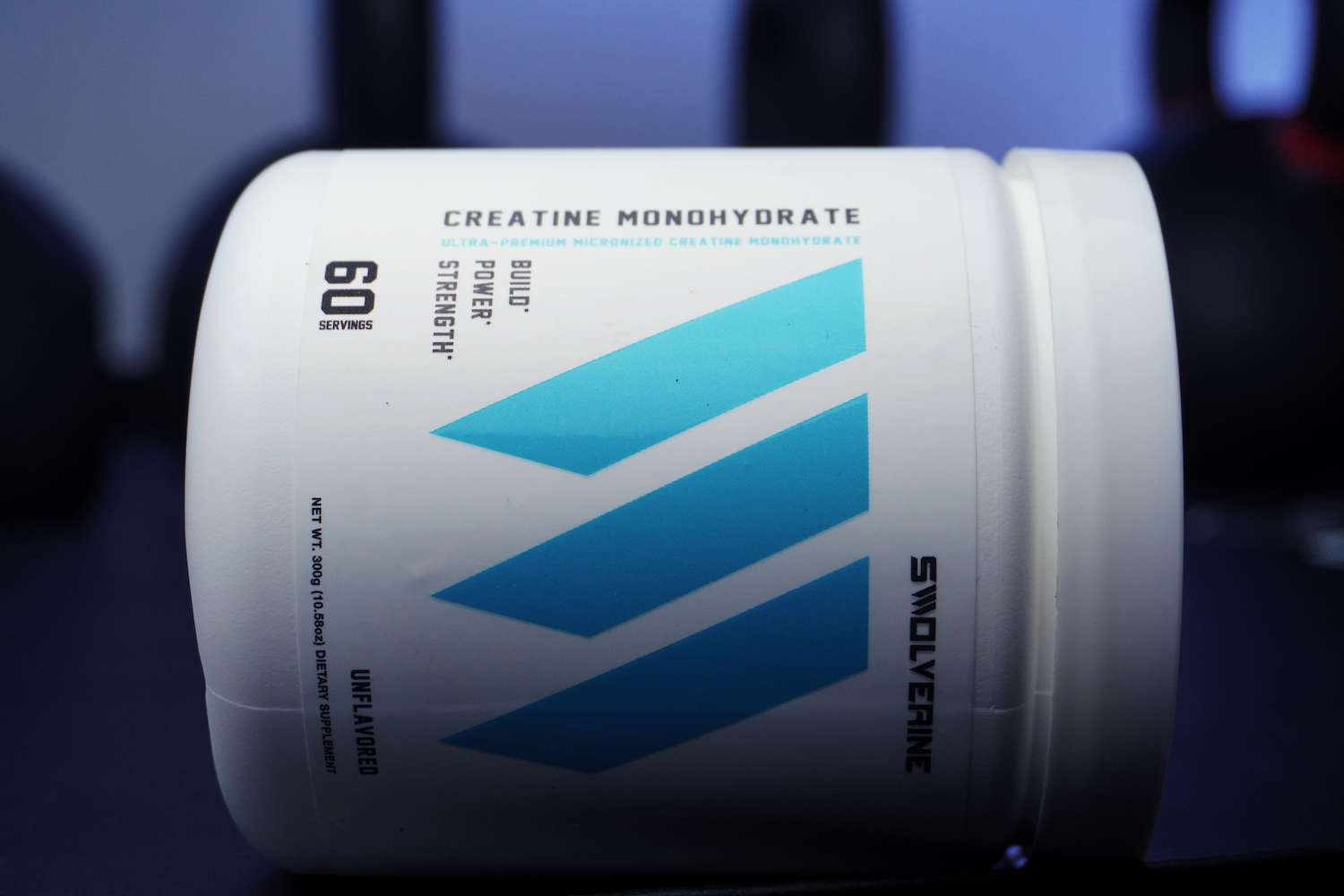If you're training hard and want to build muscle, recover faster, and improve performance, you've probably heard about BCAAs and Creatine. Both supplements are staples in the sports nutrition world, but they work in very different ways.
In this article, we’ll break down exactly what BCAAs and Creatine do, how they function in the body, their evidence-based benefits, and whether you should take one—or both.
What Are BCAAs?
Branched-Chain Amino Acids (BCAAs) refer to three essential amino acids: Leucine, Isoleucine, and Valine. These are called "branched-chain" because of their unique molecular structure, and "essential" because your body cannot make them—you must obtain them from food or supplements.
How Do BCAAs Work
BCAAs bypass the liver and are metabolized directly in skeletal muscle, making them a rapid fuel source during exercise. Leucine, in particular, is a key activator of mTOR (mechanistic target of rapamycin), a signaling pathway responsible for initiating muscle protein synthesis.
According to a review in Frontiers in Physiology, BCAAs, especially Leucine, stimulate muscle protein synthesis and may reduce muscle breakdown during prolonged or intense exercise (Negro et al., 2008).
Benefits of BCAAs
1. Promotes Muscle Protein Synthesis
Leucine activates the mTOR pathway, triggering the creation of new muscle tissue—especially important in post-workout recovery.
2. Reduces Muscle Soreness
A meta-analysis published in Nutrients concluded that BCAA supplementation significantly reduces delayed-onset muscle soreness (DOMS) after resistance and endurance exercise (Harty et al., 2019).
3. Prevents Muscle Catabolism
During caloric restriction or long workouts, BCAAs act as an energy substrate, helping prevent the breakdown of lean muscle for fuel.
4. Improves Recovery
By limiting muscle damage and enhancing protein synthesis, BCAAs help shorten recovery time between workouts.
What Is Creatine?
Creatine is a nitrogenous organic acid synthesized from the amino acids arginine, glycine, and methionine. It's stored predominantly in muscle cells and used to regenerate ATP—the body’s primary energy source for high-intensity, short-duration activities like weightlifting and sprinting.
How Does Creatine Work?
Creatine is converted into phosphocreatine in the muscles, which then donates a phosphate group to ADP (adenosine diphosphate) to regenerate ATP (adenosine triphosphate). More phosphocreatine means more rapid energy regeneration during high-output training.
A seminal study published in Molecular and Cellular Biochemistry found that creatine supplementation increases intramuscular creatine stores by 20–40%, resulting in enhanced muscular strength and power (Persky & Brazeau, 2001).
Benefits of Creatine
1. Increases Strength and Power
Creatine supplementation is proven to enhance maximal strength, sprint performance, and total training volume (Kreider et al., 2017).
2. Promotes Muscle Growth
Increased training intensity and volume result in greater gains in lean body mass. Creatine also draws water into muscle cells, which may contribute to an anabolic environment.
3. Enhances High-Intensity Performance
By regenerating ATP faster, creatine allows athletes to sustain high power outputs for longer periods.
4. Speeds Recovery and Reduces Muscle Damage
Emerging evidence suggests that creatine may also reduce inflammation and oxidative stress following exhaustive training (Rawson et al., 2011).
RELATED ARTICLE: Pros And Cons Of Creatine Monohydrate
Kre-Alkalyn: An Improved Form of Creatine
Unlike regular Creatine Monohydrate, which requires a loading phase and may cause bloating, Kre-Alkalyn is a pH-corrected creatine designed to minimize conversion to creatinine—a waste byproduct.
Kre-Alkalyn has been shown to have better stability in fluid and superior uptake compared to standard creatine forms (Jagim et al., 2012).
Benefits of Kre-Alkalyn
-
No loading or cycling phase required
-
Reduced GI distress and bloating
-
Equivalent results with lower doses
-
Higher absorption and better endurance support
RELATED READ: Kre-Alkalyn vs. Creatine Monohydrate
Creatine vs BCAAs: What’s the Real Difference?
If you've ever stood in the supplement aisle debating between BCAAs and Creatine, you're not alone. Both are promoted as performance-boosters—but they work in very different ways.
Think of it like this:
-
BCAAs are your recovery crew.
They’re like the construction workers who show up after your workout to repair and rebuild what was broken down. They're especially useful if you're doing long training sessions, fasted cardio, or cutting calories—situations where muscle breakdown can become a real issue. Leucine, one of the key amino acids in BCAAs, tells your body, “Hey, it’s time to start building muscle now.” -
Creatine is your power plant.
This stuff is like plugging your muscles into a backup generator during training. It boosts your ability to perform explosive movements like sprinting, jumping, and lifting heavy. Creatine helps regenerate ATP—the fuel your muscles run on—so you can push harder, go longer, and lift more weight.
The Simplified Science
-
BCAAs = muscle preservation + recovery
They’re already broken down and ready to use, fueling your muscles and protecting them from being broken down as energy. -
Creatine = strength + power
It builds up your stored energy (phosphocreatine) in the muscle, allowing you to produce more force in short bursts—perfect for HIIT, powerlifting, and sprint-style training.
Who Should Take What?
-
Doing endurance work, long metcons, or cutting weight? BCAAs will help you preserve muscle and reduce soreness.
-
Training for strength, muscle mass, or explosive power? Creatine is your best bet for real performance gains.
-
Doing both? Then take both—because they don’t compete, they complement each other. BCAAs handle what happens after the workout. Creatine fuels what happens during it.
BCAAs help repair the house, while creatine helps you build it bigger and faster.
If you're serious about training and performance, combining both is like upgrading from regular gas to premium fuel and adding a top-tier maintenance crew—at the same time.
| Feature | BCAAs | Creatine |
|---|---|---|
| Type | Essential amino acids | Naturally occurring compound |
| Primary Function | Prevents muscle breakdown, supports recovery | Replenishes ATP, boosts strength & power |
| Timing | Pre-, intra-, or post-workout | Daily (any time), best before or after |
| Best For | Recovery, preserving muscle mass | Strength, size, performance enhancement |
| Loading Required | No | Yes (monohydrate), No (Kre-Alkalyn) |
Common Questions About BCAAs vs Creatine
Should I Take BCAAs or Creatine?
You don’t have to choose—they work better together. BCAAs help reduce muscle breakdown and enhance recovery, while Creatine fuels strength and high-intensity performance. For most training goals, using both provides complementary benefits.
Can I Mix BCAAs and Creatine?
Yes. In fact, many athletes mix them pre- or intra-workout. Swolverine’s unflavored Kre-Alkalyn and Lemon-Lime BCAAs combine well for convenience and flavor.
Do I Need to Load Creatine?
Only if you're using Creatine Monohydrate. A typical loading phase involves 20g/day split into 4 doses for 5–7 days, followed by a 3–5g/day maintenance phase. Kre-Alkalyn does not require loading.
For more, read Do You Need to Load Creatine?
Do BCAAs Help With Fat Loss?
While not directly fat-burning, BCAAs help preserve muscle mass during a calorie deficit, which is critical for improving body composition. They may also reduce fatigue, helping you push harder during cardio and strength training.
When comparing BCAAs vs Creatine, it’s not about which one is better—it's about what each one is best at.
-
If your focus is recovery, muscle maintenance, and soreness reduction, BCAAs deliver.
-
If you’re chasing power, endurance, and lean mass gains, creatine is essential.
-
Together, they create a synergistic effect, powering performance and accelerating results.
Shop the Stack:
Would you like this formatted for email, landing page, carousel, or downloadable PDF? Let me know and I’ll tailor it for that use.
RELATED ARTICLE: 4 Big Benefits Of BCAAs
RELATED ARTICLE: The Ultimate Guide To BCAAs







